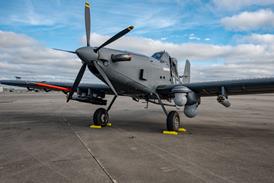Guy Norris/LOS ANGELES
McDONNELL DOUGLAS (MDC) and the European Joint Aviation Authorities (JAA) are at loggerheads over changes to the MD-90 stall-recognition and recovery system which the JAA wants before granting European certification.
The MD-90, like the MD-80, has a stick-shaker to warn the crew of an impending stall and a supplementary stall-recognition system (SSRS) which identifies the stall by activating a flashing light and aural/vocal warnings. "The JAA have so far not accepted the SSRS as stall identification and have taken the position that the stick-pusher will be required to identify the stall for MD-90 JAA certification," says MDC.
The stall-warning and SSRS systems are required for US Federal Aviation Administration certification and the stick-pusher is an enhancement not required for the ticket.
The JAA MD-90 certification effort is being led largely by staff from the UK Civil Aviation Authority, which also required a stick-pusher for its certifications of the DC-9 and MD-80 series. "If this continues, we get no credit for the SSRS - resulting in additional costs for Douglas and the operators with, we believe, no benefits to safety of flight," says chief design engineer Art Kressly.
The UK CAA says that the stick -pusher "...is a JAA position, not a unilateral CAA position. The JAA position is that the aircraft should have a stick pusher."
Kressly says that changes to computer software, to make the stick-pusher an identification device, "...could potentially affect stall speeds and resulting performance of the aircraft".
To back its claims that the current system is adequate, MDC has given a briefing document to the JAA, covering the 65 million-hour flying history of the DC-9/MD-80 series. "It's seen just about everything you could see in service, without any SSRS-related problems. A dozen authorities have certificated the DC-9/MD-80 with the SSRS as an identification device, including many of the national authorities within the JAA," the company says.
.
Source: Flight International























